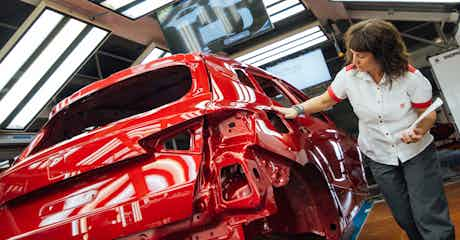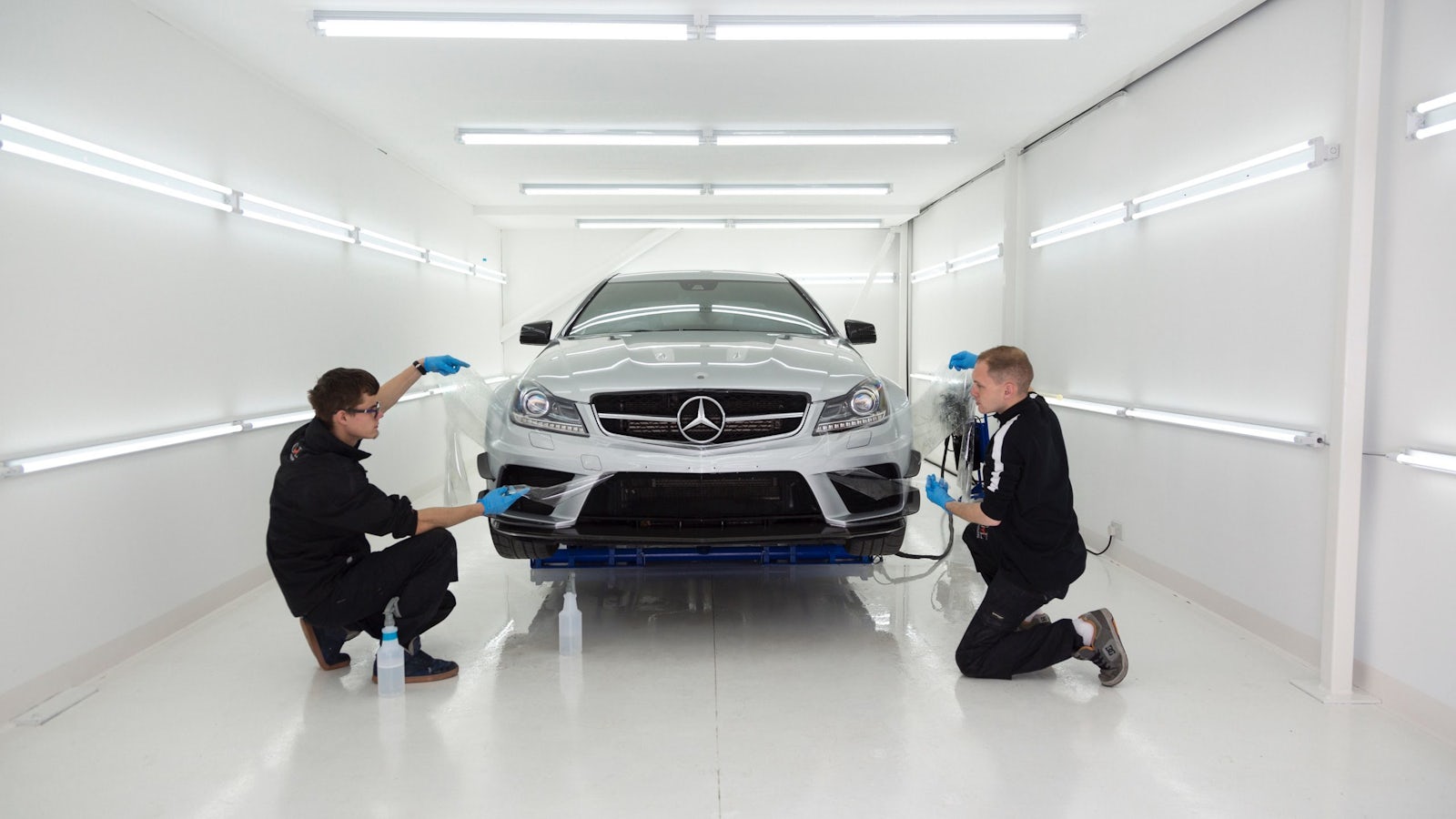What is car paint protection and is it worth it?
January 05, 2023 by carwow staff

Paint protection has grown in popularity and sophistication over the years, but is it worth getting?
Considering they cost many, many thousands of pounds, it’s in some ways strange to think of what cars are subjected to.
Gravel, grit, rain, bug splatter and bird mess – nature and the man-made environment throw all manner of grot, grime and challenges at cars and, as by its very nature, a car’s bodywork bears the brunt of these.
Understandably, many people want to do all they can to lessen these ravages, and one of the ways to do this is to invest in paint protection for a car.
What exactly is car paint protection?
Commonly, when people talk about paint protection with regard to cars, they are talking about paint protection film, commonly abbreviated to PPF.
Paint protection film
PPF is a thin, tough and transparent plastic film that is stuck over a car’s bodywork so that the film, rather than the paint or the metalwork, absorbs impacts from stones thrown up by the car and other vehicles, for example, acting as a shield for the expensive-to-repair bodywork.
Paint protection film can be applied at the car factory or by a trained third-party technician. Some cars come as standard with PPF around the rear wheelarches (particularly if they’re rear-wheel-drive) so that the bodywork isn’t damaged when stones are thrown up by the driven wheels.

Aftermarket PPF solutions are often applied to the front end of a car, as this will often fall victim to gravel damage and, by applying the film to the front of the car, the most vulnerable areas can be protected. The front wings and the leading edge of the bonnet and roof may also be covered, as can the side sills that run underneath the doors, while it is also possible to have the entire car covered in PPF.
PPF is expensive to buy and have fitted, though and, while it is often difficult to detect, it does have a slightly different from paint, so many owners opt only to have the most vulnerable areas of a car covered.
Some PPF films are even ‘self healing’, meaning that scratches and impacts to them can be repaired as the pliable nature of the film and plastic ‘memory’ reseals where damage has only penetrated to a certain depth.
Waxes and liquid protectants
In addition to PPF film, a rub-on or spray-on clear layer can also be applied to a car’s bodywork, though while this can protect against bird mess (which can eat through the top layer of paint), it will not be able to prevent stones and gravel from damaging the paintwork.
How much does paint protection film cost?
Hundreds if not thousands of pounds. PPF tends to be applied as templates based around specific cars’ designs, and this entails expense in itself, while the process of applying the film requires a trained technician and a well-lit, clean workshop environment, as well as special application tools and preparation for the paintwork – there’s little point in applying PPF over dirt and moisture, after all.
Naturally, the more areas that you have covered by PPF, the more it will cost you, but a simple covering of the front wings, bumper, and the leading edge of the bonnet might come in at £500, while getting the whole of the car covered could be 10 times that amount.
Can I just insure my paint instead of using car paint protection?
It is possible to take out something called ‘cosmetic damage insurance’ which will, as its name suggests, see you pay an annual premium, with the insurance company paying for any minor bodywork or alloy wheel repairs that might be required. There will, naturally, be myriad conditions about the nature and number of claims such a policy will pay out for, while you’ll also be without your car when any damage that may occur is repaired.
Is it worth getting car paint protection?
While by no means a definitive statement, as a rule, PPF tends to be applied to high-value cars where cosmetic condition is key to residual values.
Owners of more everyday cars, as well as buyers of second-hand cars, tend to anticipate and accept that cars are subject to wear and tear as they age and rack up the miles, so while paint protection can help keep your car in good condition, it may cost more to have applied than it saves you come resale time.
If you, like most of us, have a relatively run-of-the-mill car that you use as most people do (IE heading to supermarkets rather than supercar shows), a better way of protecting your car might be to wash it and wax it yourself on a regular basis. This will both afford its bodywork some protection, while also helping you spot any damage that may occur before it becomes too serious (EG a chip in the paintwork can result in rust if not dealt with in good time).
Cars Change? Carwow!
Looking for a new set of wheels? With Carwow you can sell your car quickly and for a fair price – as well as find great offers on your next one. Whether you’re looking to buy a car brand new, are after something used or you want to explore car leasing options, Carwow is your one stop shop for new car deals.















